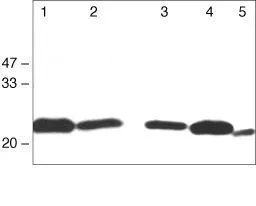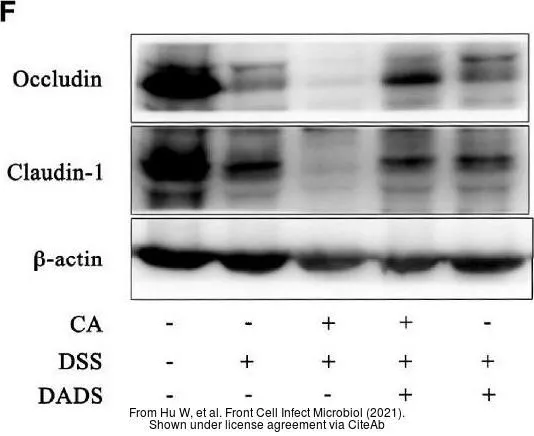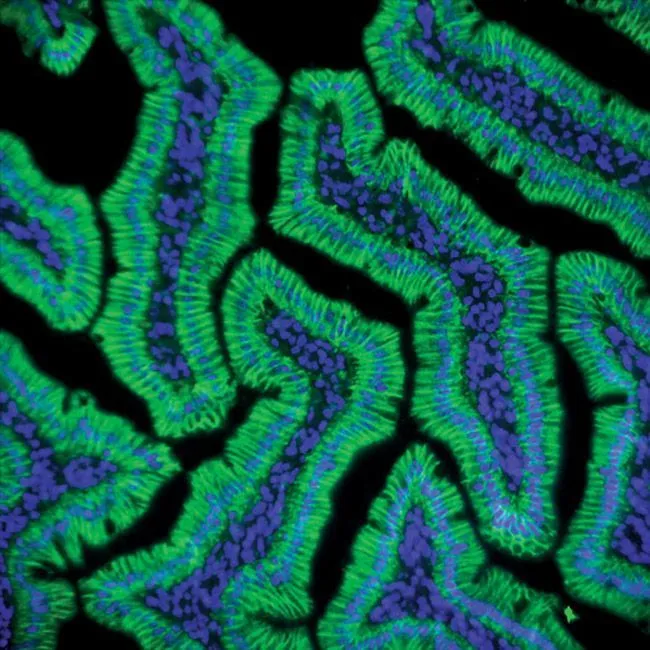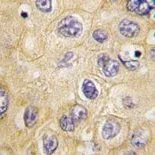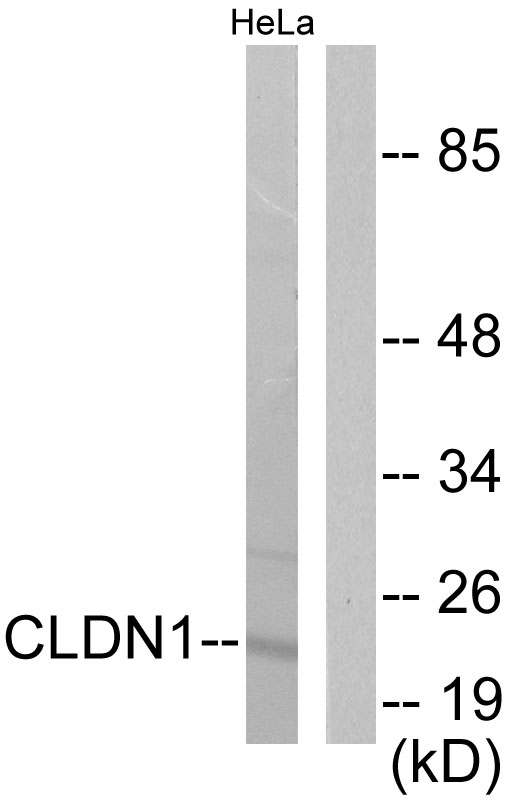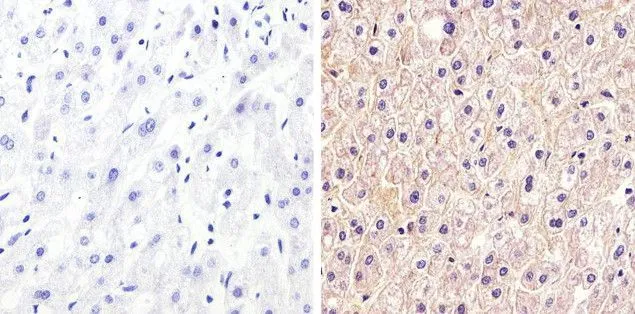
IHC-P analysis of human liver tissue using GTX54539 Claudin 1 antibody. Right : Primary antibody Left : Negative control without primary antibody Antigen retrieval : 10mM sodium citrate (pH 6.0), microwaved for 8-15 min Dilution : 1:20
Claudin 1 antibody
GTX54539
ApplicationsImmunoFluorescence, ImmunoPrecipitation, Western Blot, ELISA, ImmunoCytoChemistry, ImmunoHistoChemistry, ImmunoHistoChemistry Frozen, ImmunoHistoChemistry Paraffin
Product group Antibodies
TargetCLDN1
Overview
- SupplierGeneTex
- Product NameClaudin 1 antibody
- Delivery Days Customer9
- Application Supplier NoteWB: 1-2 microg/mL. ICC/IF: 15-20 microg/mL. IHC-P: 1:10-1:100. ELISA: 0.1-1 microg/ml. *Optimal dilutions/concentrations should be determined by the researcher.Not tested in other applications.
- ApplicationsImmunoFluorescence, ImmunoPrecipitation, Western Blot, ELISA, ImmunoCytoChemistry, ImmunoHistoChemistry, ImmunoHistoChemistry Frozen, ImmunoHistoChemistry Paraffin
- CertificationResearch Use Only
- ClonalityPolyclonal
- Concentration0.25 mg/ml
- ConjugateUnconjugated
- Gene ID9076
- Target nameCLDN1
- Target descriptionclaudin 1
- Target synonymsclaudin-1; CLD1; ILVASC; SEMP1; senescence-associated epithelial membrane protein 1
- HostRabbit
- IsotypeIgG
- Protein IDO95832
- Protein NameClaudin-1
- Scientific DescriptionTight junctions represent one mode of cell-to-cell adhesion in epithelial or endothelial cell sheets, forming continuous seals around cells and serving as a physical barrier to prevent solutes and water from passing freely through the paracellular space. These junctions are comprised of sets of continuous networking strands in the outwardly facing cytoplasmic leaflet, with complementary grooves in the inwardly facing extracytoplasmic leaflet. The protein encoded by this gene, a member of the claudin family, is an integral membrane protein and a component of tight junction strands. Loss of function mutations result in neonatal ichthyosis-sclerosing cholangitis syndrome. [provided by RefSeq, Jul 2008]
- Storage Instruction-20°C or -80°C,2°C to 8°C
- UNSPSC12352203
References
- Fucose ameliorates the proinflammatory property of Fusobacterium nucleatum in colitis via altering its metabolism.Read more
- Diallyl Disulfide (DADS) Ameliorates Intestinal Candida albicans Infection by Modulating the Gut microbiota and Metabolites and Providing Intestinal Protection in Mice. Hu W et al., 2021, Front Cell Infect MicrobiolRead more
- Alterations in the gut microbiota and metabolic profiles coincide with intestinal damage in mice with a bloodborne Candida albicans infection. Hu W et al., 2021 May, Microb PathogRead more
- Cytoplasmic aryl hydrocarbon receptor regulates glycogen synthase kinase 3 beta, accelerates vimentin degradation, and suppresses epithelial-mesenchymal transition in non-small cell lung cancer cells. Li CH et al., 2017 May, Arch ToxicolRead more

